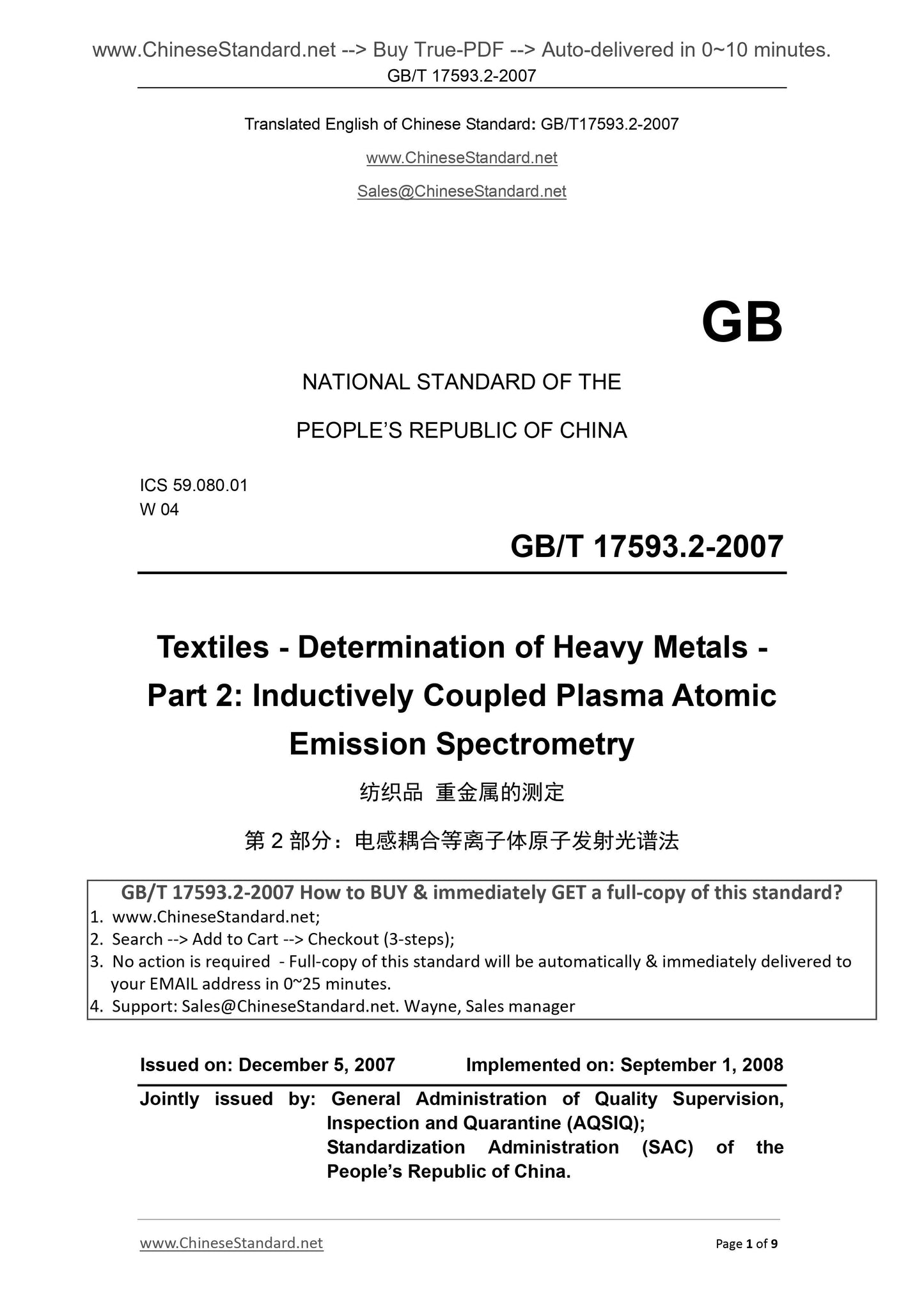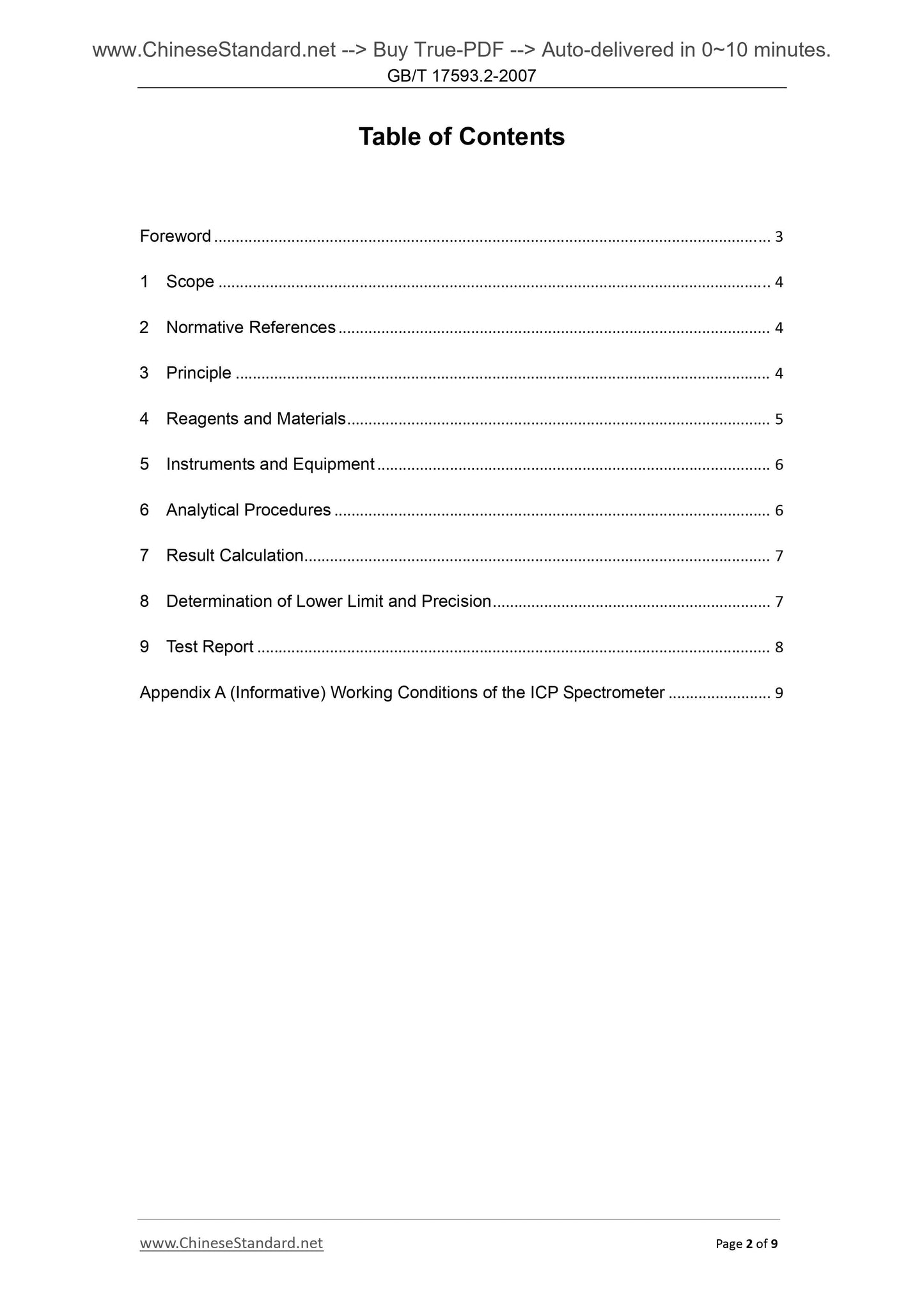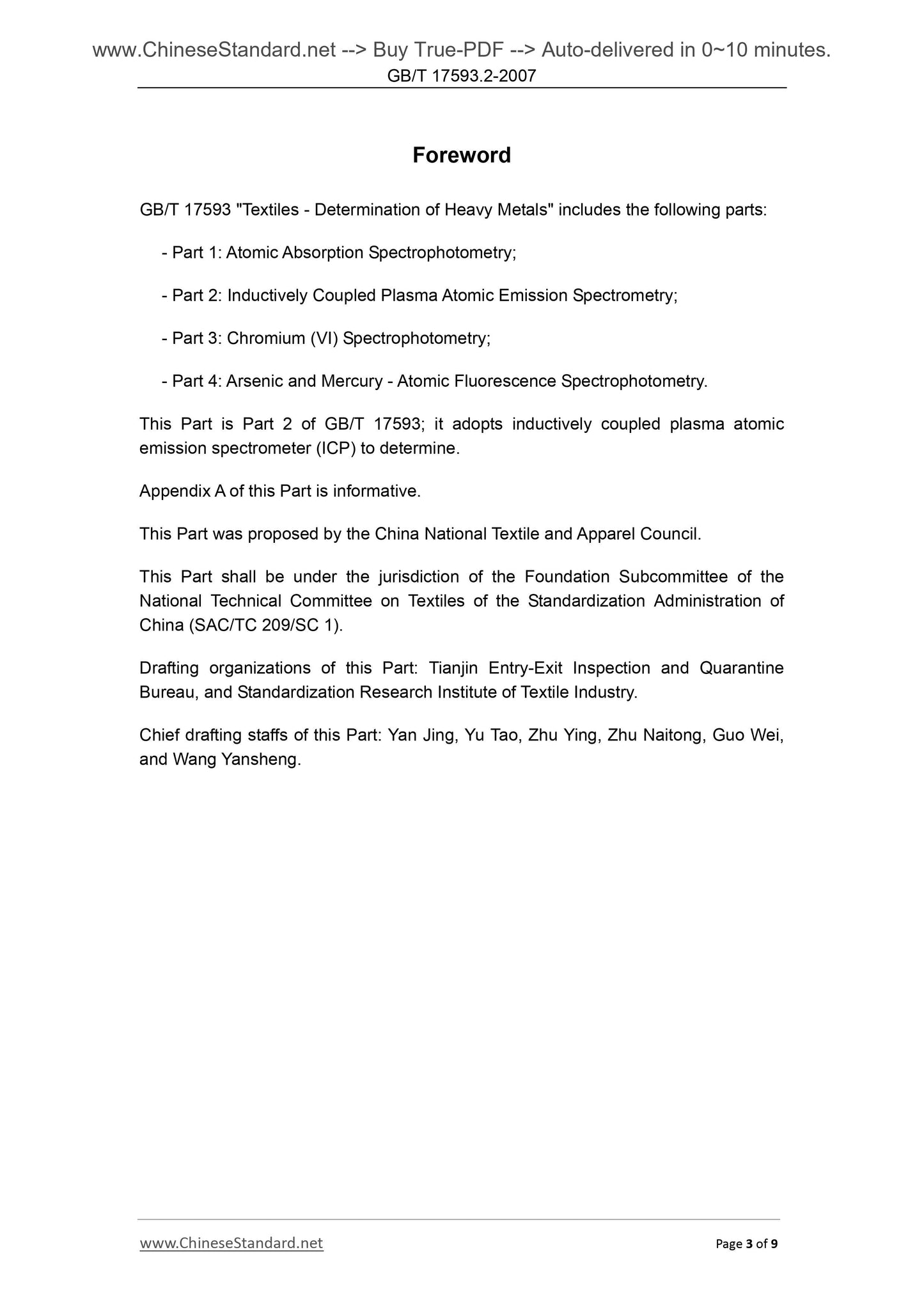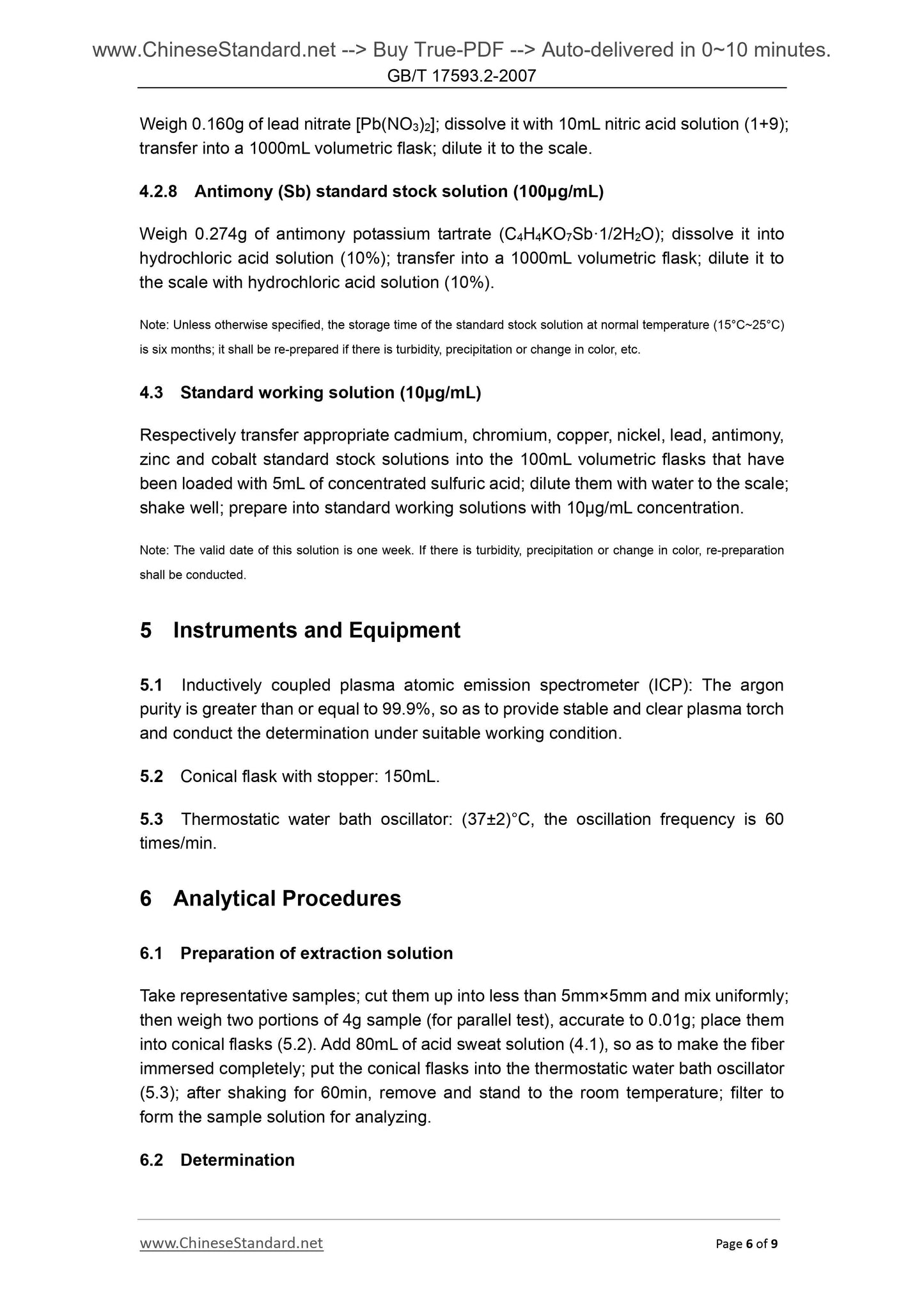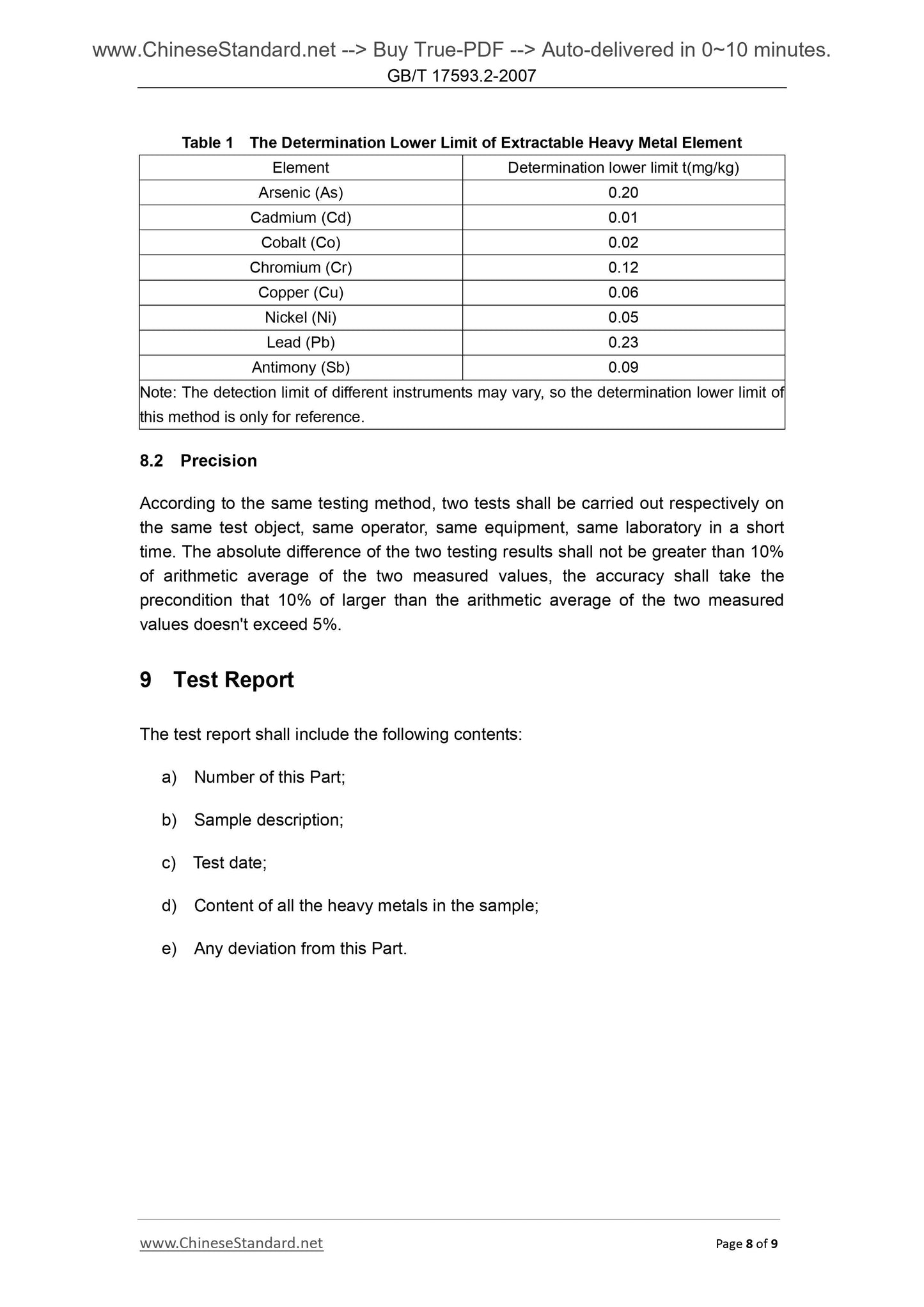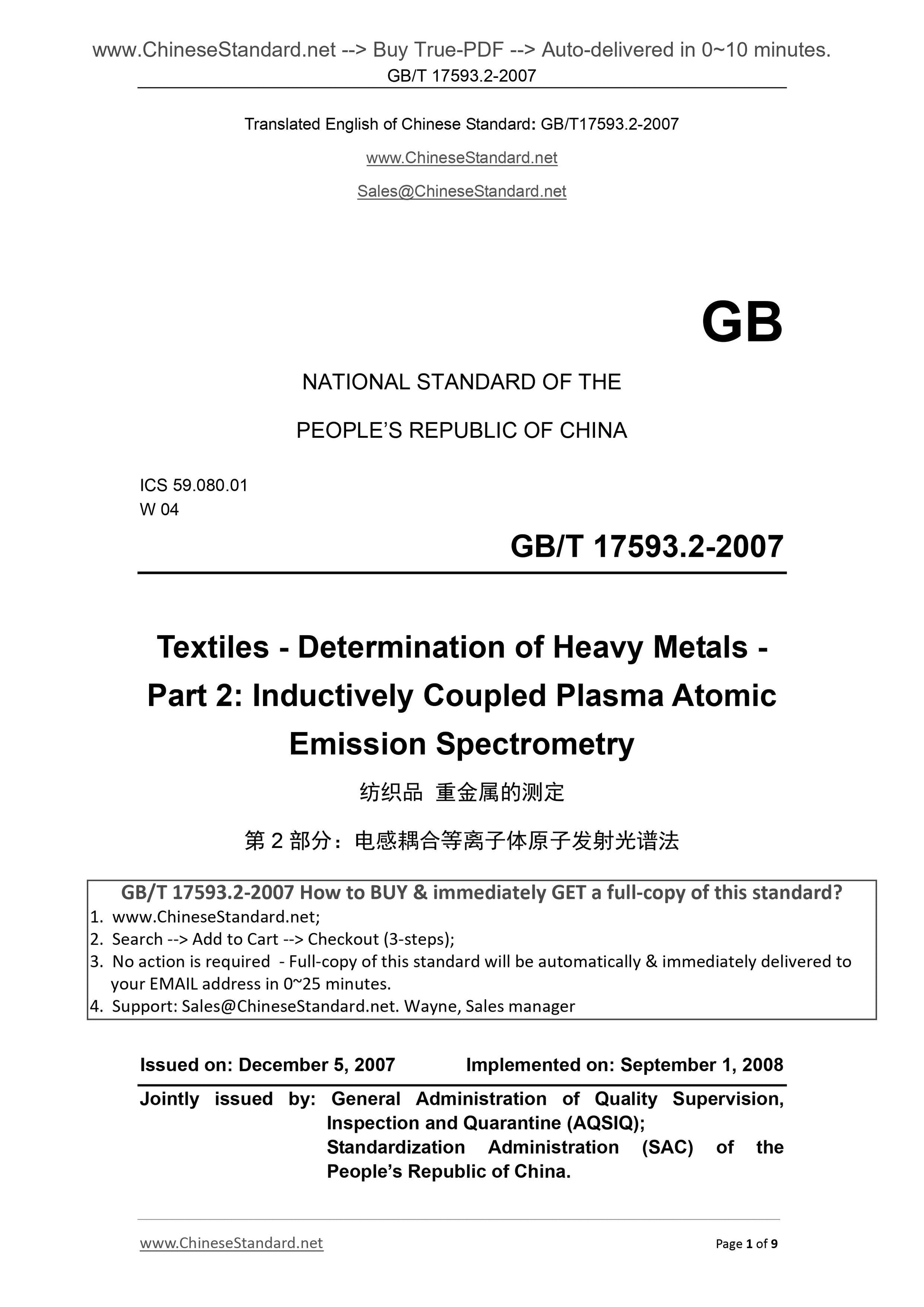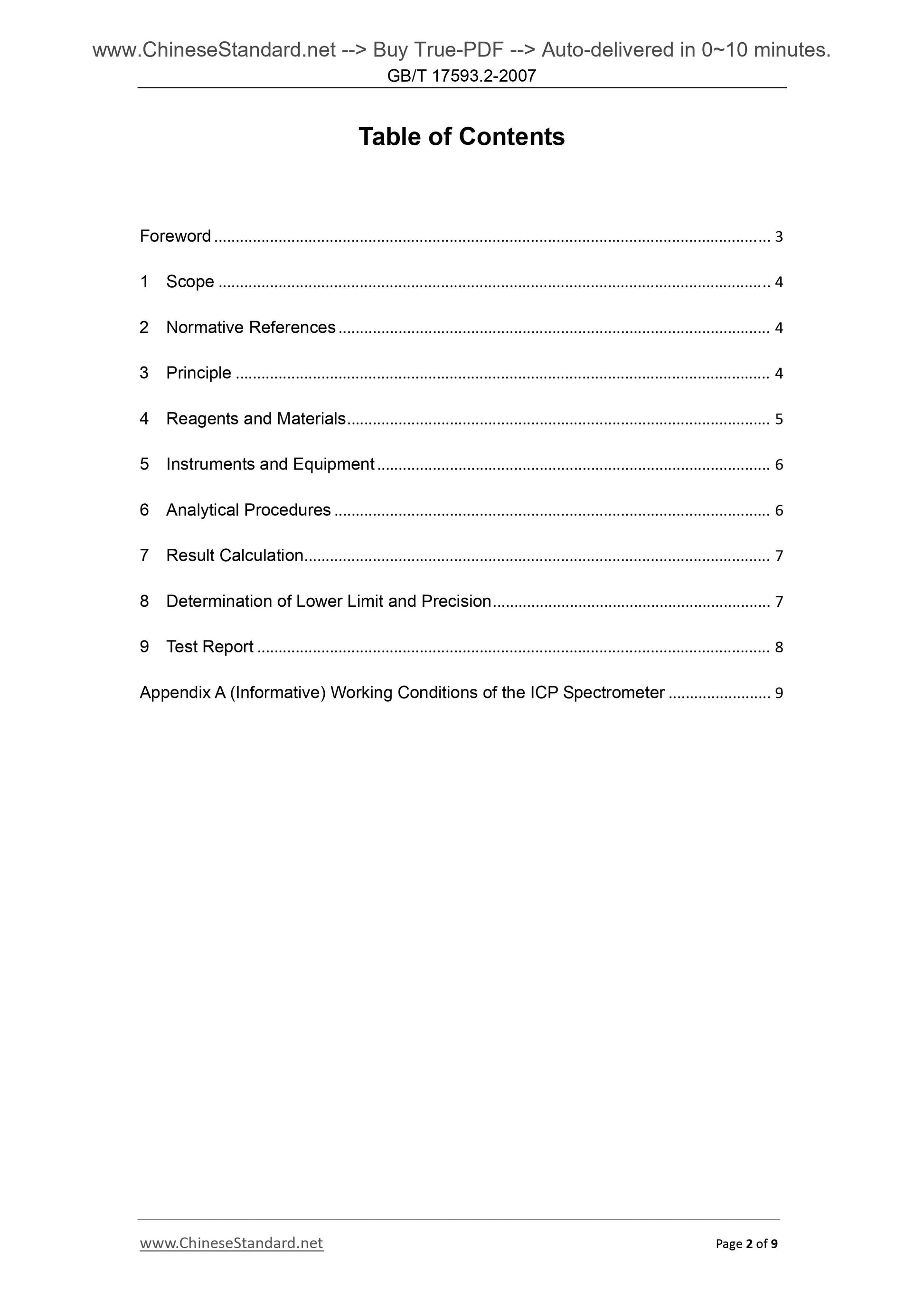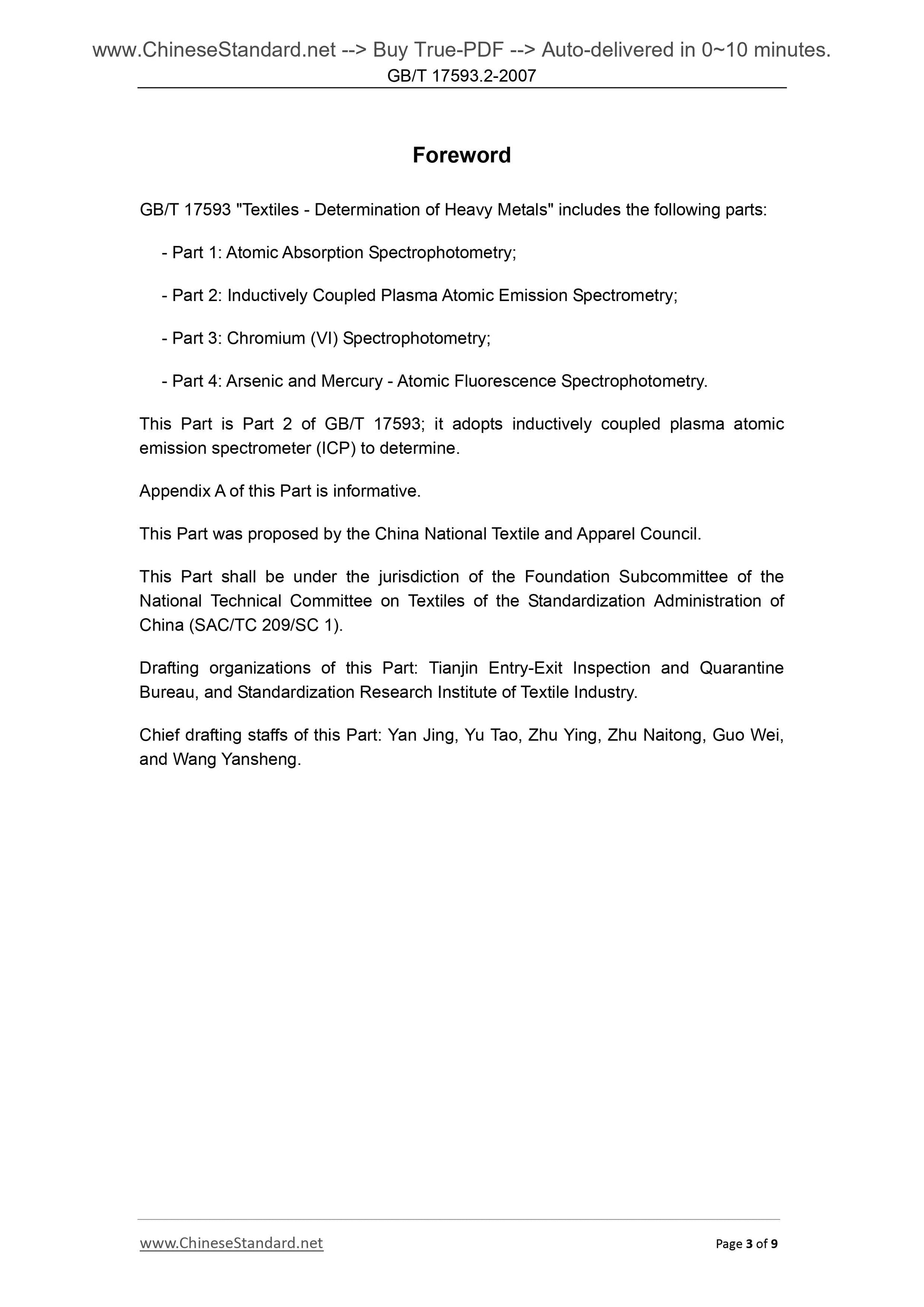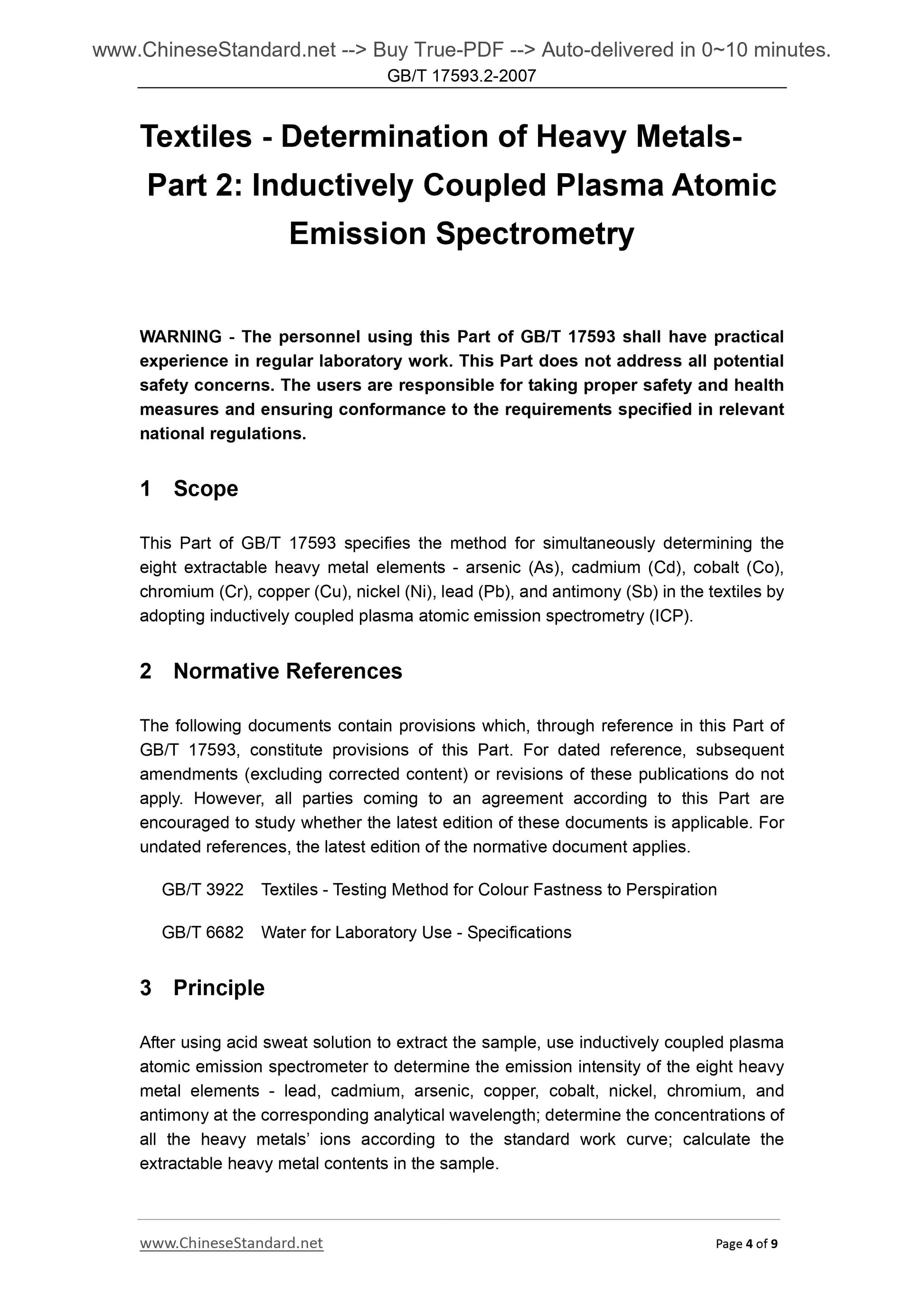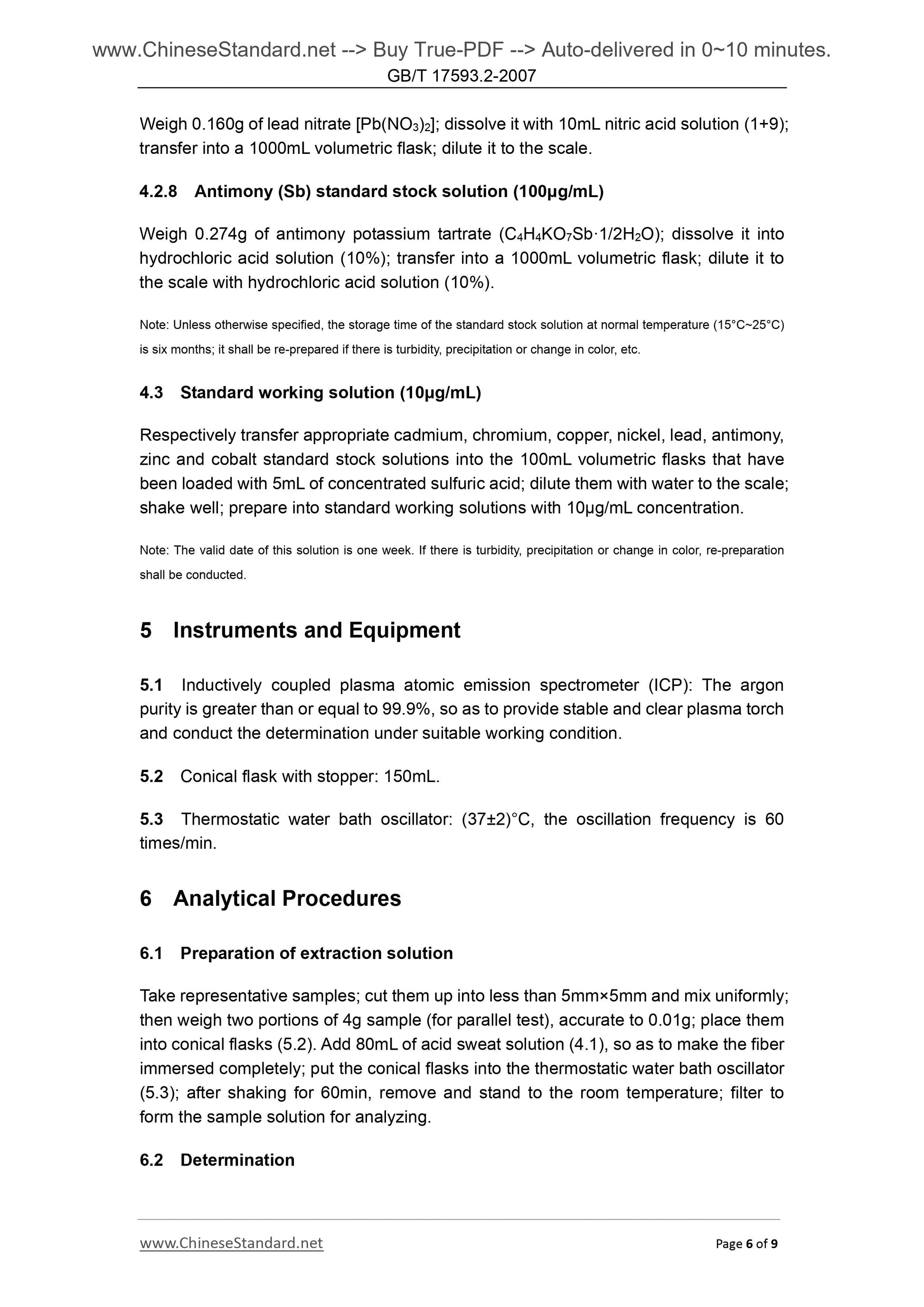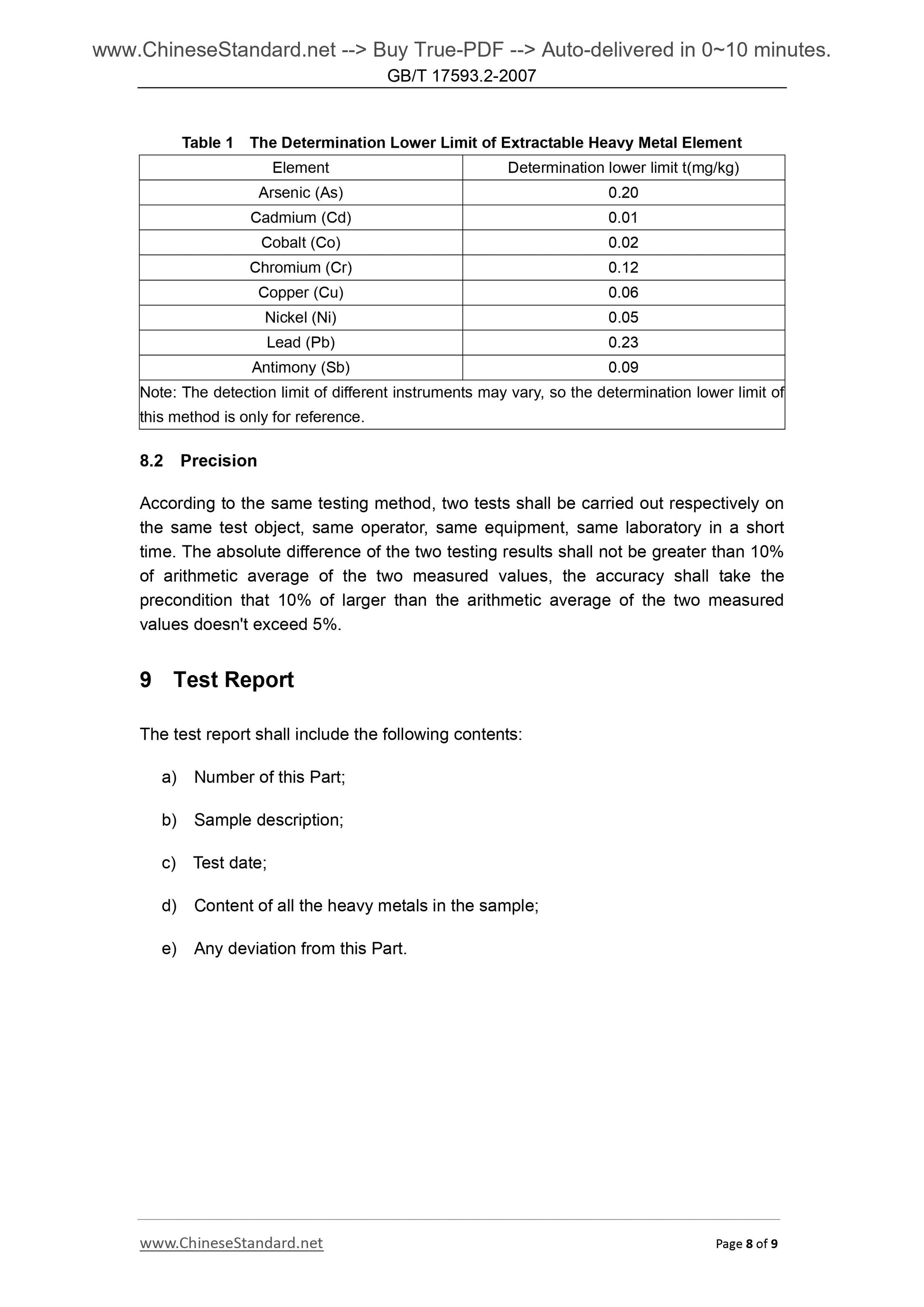1
/
of
6
www.ChineseStandard.us -- Field Test Asia Pte. Ltd.
GB/T 17593.2-2007 English PDF (GB/T17593.2-2007)
GB/T 17593.2-2007 English PDF (GB/T17593.2-2007)
Regular price
$70.00
Regular price
Sale price
$70.00
Unit price
/
per
Shipping calculated at checkout.
Couldn't load pickup availability
GB/T 17593.2-2007: Textiles -- Determination of heavy metals -- Part 2: Inductively coupled plasma atomic emission spectrometry
Delivery: 9 seconds. Download (and Email) true-PDF + Invoice.Get Quotation: Click GB/T 17593.2-2007 (Self-service in 1-minute)
Newer / historical versions: GB/T 17593.2-2007
Preview True-PDF
Scope
This Part of GB/T 17593 specifies the method for simultaneously determining theeight extractable heavy metal elements - arsenic (As), cadmium (Cd), cobalt (Co),
chromium (Cr), copper (Cu), nickel (Ni), lead (Pb), and antimony (Sb) in the textiles by
adopting inductively coupled plasma atomic emission spectrometry (ICP).
Basic Data
| Standard ID | GB/T 17593.2-2007 (GB/T17593.2-2007) |
| Description (Translated English) | Textiles -- Determination of heavy metals -- Part 2: Inductively coupled plasma atomic emission spectrometry |
| Sector / Industry | National Standard (Recommended) |
| Classification of Chinese Standard | W04 |
| Classification of International Standard | 59.080.01 |
| Word Count Estimation | 7,760 |
| Date of Issue | 2007-12-05 |
| Date of Implementation | 2008-09-01 |
| Quoted Standard | GB/T 3922; GB/T 6682 |
| Regulation (derived from) | National Standard Approval Announcement 2007 No.13 (Total No.113) |
| Issuing agency(ies) | General Administration of Quality Supervision, Inspection and Quarantine of the People's Republic of China, Standardization Administration of the People's Republic of China |
| Summary | This standard specifies the use of plasma-atomic emission spectrometer for textiles extractable heavy metals arsenic, method of simultaneous determination of eight elements antimony, cadmium, cobalt, chromium, copper, Nickel, lead. This section applies to textile materials and products. |
Share
